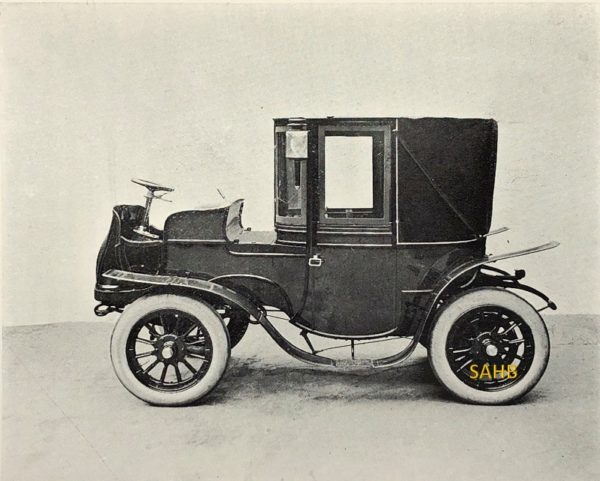
The article on electric cars in the 1904 book The Complete Motorist by A. B. Filson Young first stated that “Until … the new method of storing electricity, which is the goal of all electric invention at the present day, is discovered, electric motor-cars must remain useless for all but certain specialised purposes…”
But it then went on to praise the qualities of electric carriages for town work, remarking that “All Londoners are familiar with the long lines of electric broughams, landaus and victorias in Hyde Park and in the West End streets…”
So it was that many of these cars were made and sold in the early twentieth century, including City and Suburban, who lasted from 1901 to 1905. The company were agents for the American Columbia company’s electric cars, but most of their bodies were made in Britain.
City and Suburban were notable for their royal patronage. Queen Alexandra owned an early one from 1901. It was a 2-seater ‘victoriette’ in which she travelled around the grounds of her Sandringham estate. It survives in the National Motor Museum at Beaulieu. Her son the Prince of Wales (later George V), bought a town brougham in 1903.
The City and Suburban car was noted for the use of two electric motors, each one directly geared to a rear wheel, and the positioning of the batteries in two cases in front and behind the carriage body. Most electric cars of the time slung their batteries in a cradle under the car, but improved access to those batteries was claimed by City and Suburban to outweigh the disadvantage of high centre of gravity at the low speeds travelled by such a vehicle.
The company’s headquarters, garage and charging centre were in the ex-skating rink known as the Niagara building in Westminster – a name also given to their cheapest 1903 model, the Niagara doctor’s runabout, which sold for £250.
It is often recorded that electric vehicles of the time were not only remarkably easy to drive but also to maintain – but A. B. Filson Young gave fair warning that maintenance and ‘replating’ (recharging) were delicate matters, and inspection by the company before the owner ventured into the countryside was considered essential.
One final matter is of interest. Claude Johnson was secretary of the Automobile Club until 1903, when he left to join ‘an abortive project to manufacture electric carriages’. This was City and Suburban. Almost immediately he joined Charles Rolls’s motor agency, and the rest is history. But perhaps Johnson’s interest in the quietness and cleanliness of electric vehicles for town work influenced the creation in 1905 of the Rolls-Royce V-8 Landau and Landaulette par Excellence, both advertised as having the qualities of the finest electric carriages.
Picture courtesy of the Richard Roberts Archive







Leave a Comment